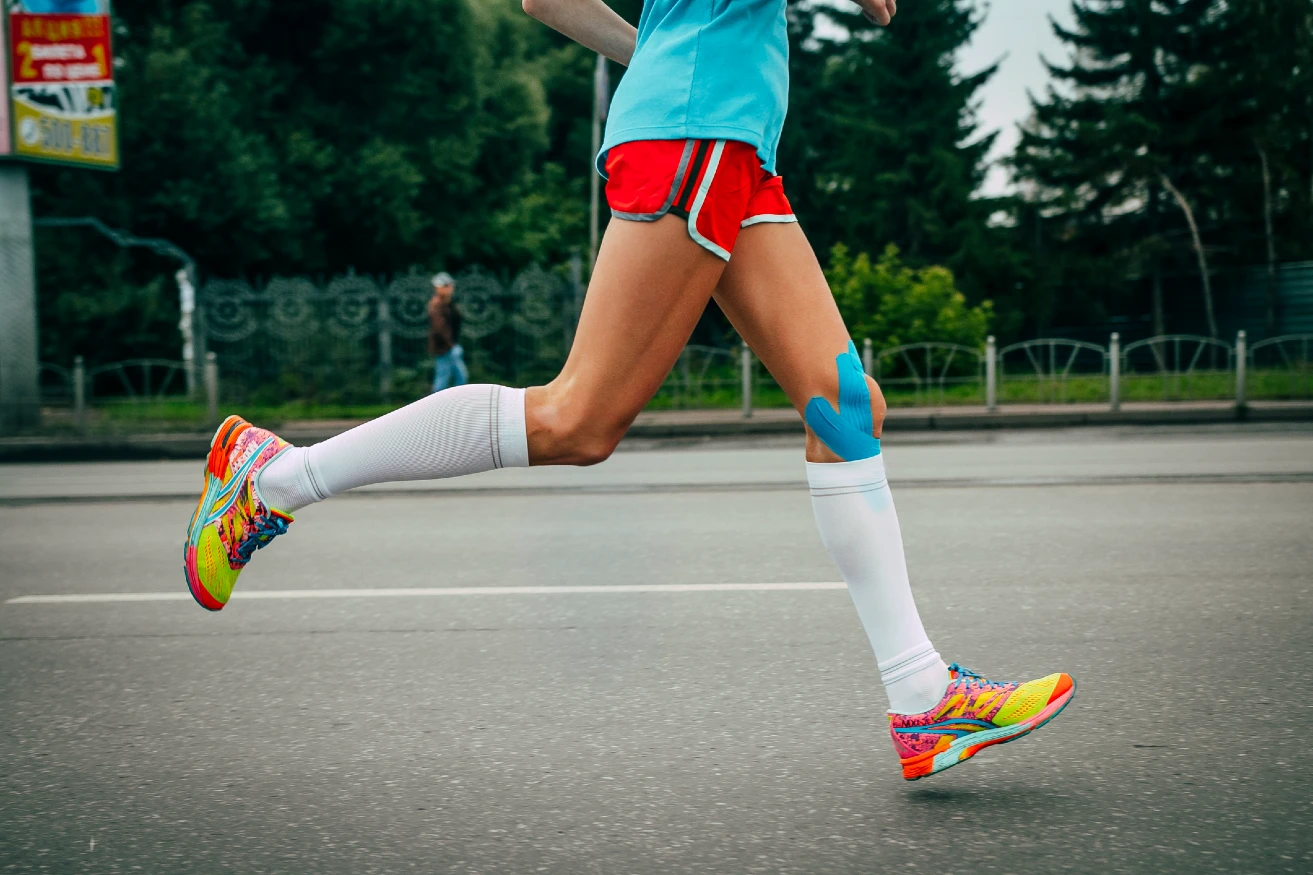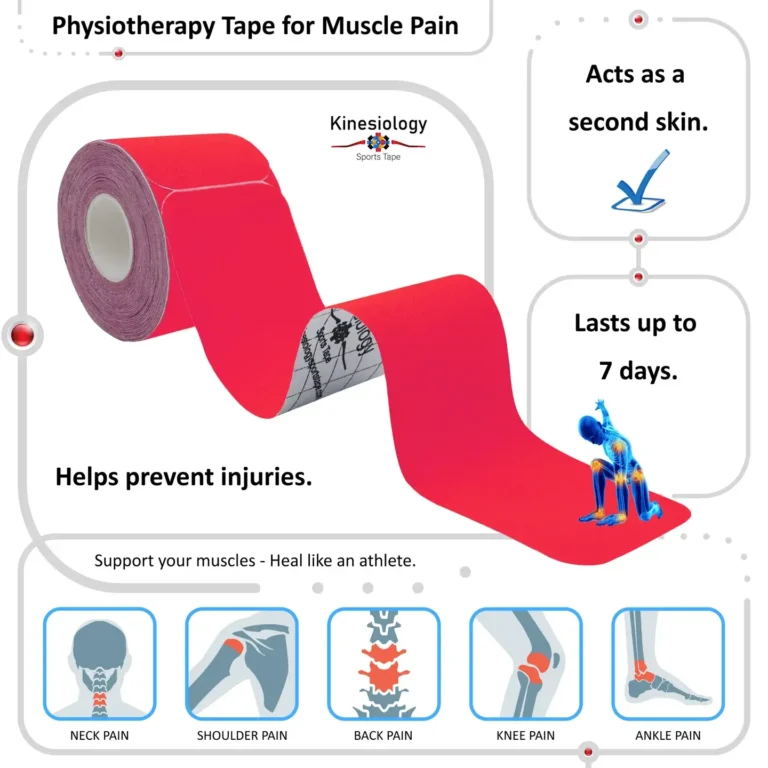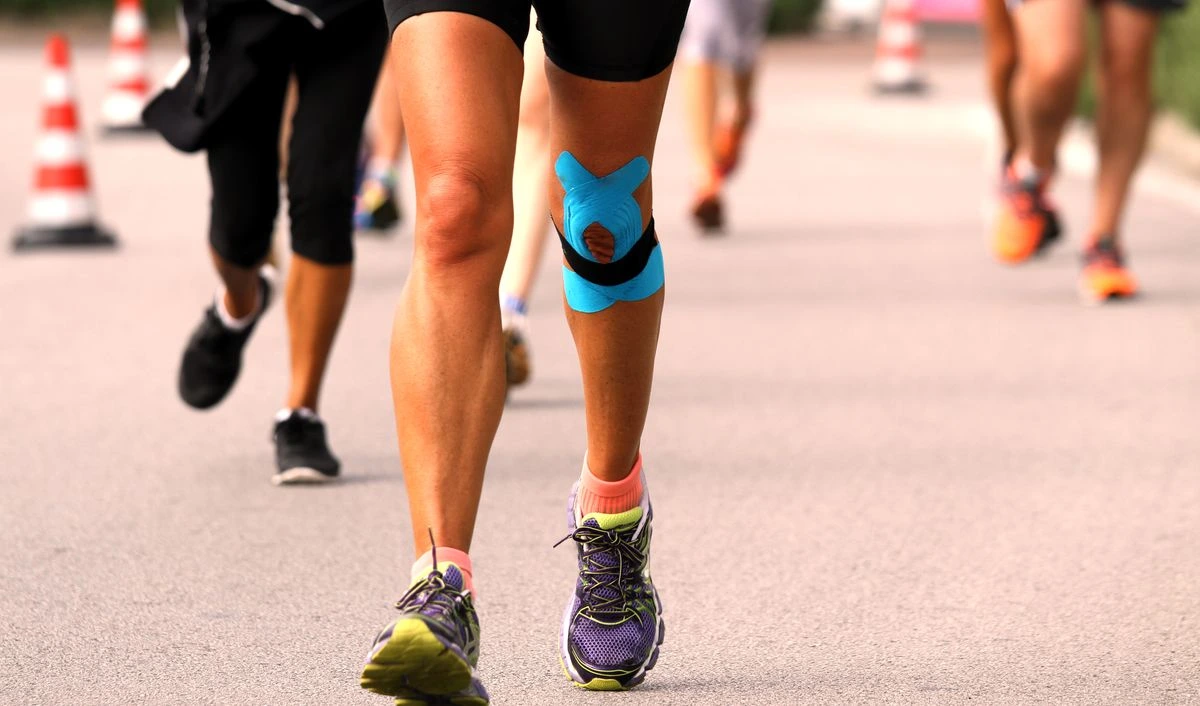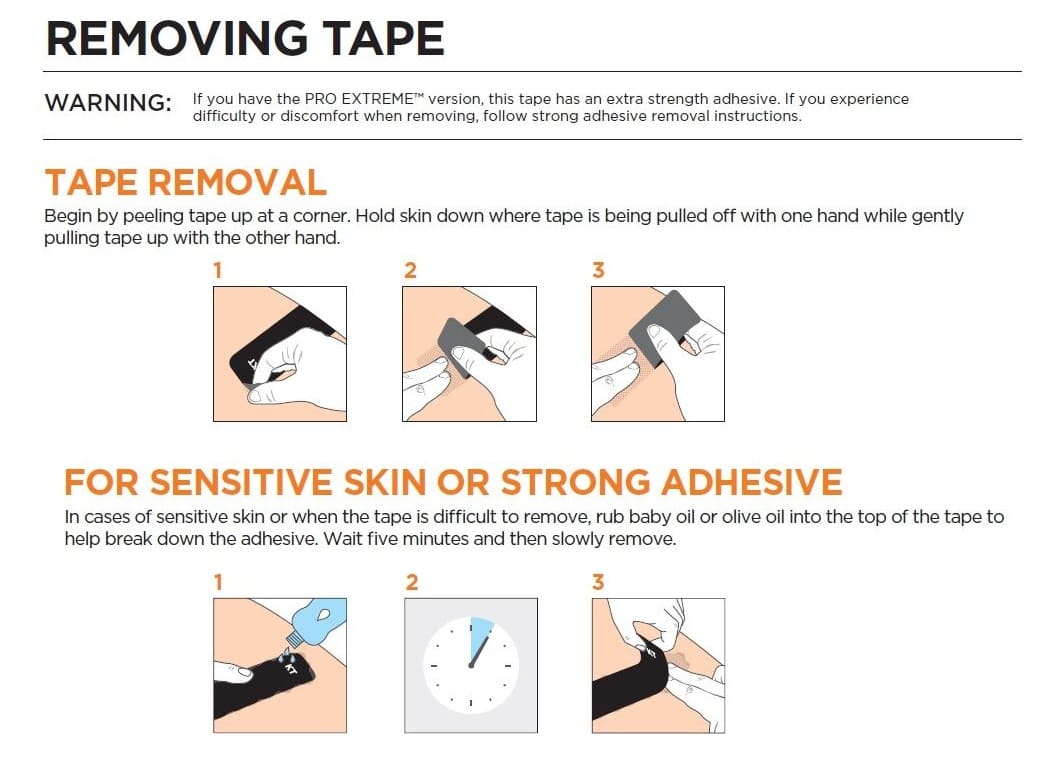How to Tape a Knee for Running: Tips for Better Comfort and Safety
Running is a high-impact activity that can strain your joints, especially your knees. Ever wondered how to tape a knee for running and why should you try taping? Knee injuries are common among runners, and one way to prevent them is by taping your knee before a run. In this blog post, we will discuss options for how to tape a knee for running to provide support and stability.
Why to tape a Knee if you feel pain when running?
One way to alleviate knee pain when running is to tape your knee. This can provide extra support and stability, reducing pain and preventing further injury. Make sure to research proper runners’ knee tapes and techniques or consult a professional before attempting to tape your knee.
Why Should You Tape a Knee for Running?
Knee tape is a specialized medical tape used to support the knee joint during physical activity. It is made of a stretchy and adhesive material that can be wrapped around the knee in different ways to provide the necessary support. Athletes use knee tape to prevent harm, support the knee joint, and promote healing after an injury. Knee tape can also help improve proprioception, which is the ability to sense the position and movement of a joint.

How Does Knee Tape Work on the Muscles?
Knee tape works by providing extra support to the knee joint, reducing stress on the muscles and ligaments surrounding the joint. It also helps to increase blood flow to the area, which can help reduce inflammation and promote healing. Knee tape can also help to improve muscle activation, which means that the muscles are better prepared to respond to the demands of physical activity.
How Often Can You Tape the Knee?
The frequency of knee taping depends on the individual needs of the athlete. Some athletes may need to tape their knees for every run, while others may only need to tape their knees for certain kinds of running loads or when they feel pain or discomfort. It is important to consult a medical professional or athletic trainer to determine the appropriate frequency and technique for knee taping.
What Injuries or Diseases Is Knee Tape Needed For?
Knee tape is commonly used for various knee injuries, including patellar tendinitis, patellofemoral pain syndrome, and knee sprains. It can also be used for runners with knee osteoarthritis or rheumatoid arthritis to provide support and reduce pain during physical activity. Knee tape can also be used as a preventative measure for runners at high risk for knee injuries, or those with previous knee injuries.
5 Benefits of Taping Your Knee for Running
Taping your knee can provide numerous benefits that can help you run with less pain and reduce the risk of injury. Let’s discuss the main ones:
1. Reduced Pain
One of the most significant benefits of taping your knee for running is that it can reduce pain. Knee pain is a common problem among runners, and various factors, such as overuse, muscle imbalance, lower extremity weakness and injury, can cause it. Taping your knee can help alleviate this pain by providing support, compression and stability to the joint, reducing the tissue demand on the affected area. This can make running more comfortable and allow you to run for longer periods of time without experiencing pain.
2. Increased Stability
Another benefit of taping your knee for running is increased stability. The knee joint is a complex structure that involves bones, muscles, tendons, and ligaments. When you run, these structures work together to support your body weight and absorb the impact of the ground. However, if any of these structures are weak or injured, it can cause instability, leading to further injury. Taping your knee can provide additional support to these structures, increasing stability and reducing the risk of injury.
3. Reduced Swelling
Swelling is a common problem among runners, especially after a long run or a high-intensity workout. Various factors, such as inflammation, injury, and overuse, can cause swelling. Taping your knee can help reduce swelling by compressing the affected area. Compression can help increase blood flow to the area, reducing inflammation and promoting healing.
4. Improved Proprioception
Proprioception refers to your body’s ability to sense its position and movement in space. Good proprioception is essential for running, as it can help you maintain proper form and reduce the risk of injury. Taping your knee can improve proprioception by providing feedback to your brain about the position and movement of your knee joint. This can help you maintain proper form and technique while running, reducing the risk of injury and improving your performance.
5. Reduced Risk of Injury
Knee injuries are a common problem among runners, and range from mild to severe. Taping your knee can provide support and stability to the joint, reducing the risk of injury. Additionally, taping your knee can help you maintain proper form and technique while running, reducing the risk of injury.
What Can You Use to Tape Your Knee for Running: 3 Types of Tapes
Various types of tapes are available in the market for taping your knee while running. The most common types of tapes are:
1. Athletic Tape
Athletic tape is popular for taping knees because it is strong and provides excellent support. It is made of cotton and has a sticky adhesive that adheres well to the skin. Athletic tape is also flexible, allowing for a full range of motion while running. To use athletic tape for the knee, apply a pre-wrap or adhesive spray to protect the skin. Then, wrap the tape around the knee, ensuring it is snug, but not too tight. Finally, secure the tape in place with a clip or adhesive.
2. Kinesiology Tape
Kinesiology tape, also known as KT tape, is another popular option for taping knees. It is made of thin, stretchy cotton that is designed to mimic the skin’s elasticity. Kinesiology tape is applied in a specific pattern that is meant to provide support and reduce pain. To use KT tape for the runner’s knee, first clean and dry the skin around the knee. Then, apply the tape in the desired pattern, ensuring it is not too tight. Finally, rub the tape to activate the adhesive.

3. Self-Adhesive Strips
Self-adhesive strips are a convenient option for taping knees. They are made of a thin, stretchy fabric that adheres to the skin without requiring clips or adhesives. Self-adhesive strips can be cut to the desired length and easily applied. First, clean and dry the skin around the knee. Then, apply the strip in the desired pattern, ensuring it is not too tight.
What Is KT Tape and What Are Its Benefits?
KT Tape is an elastic sports tape made from cotton fiber with adhesive backing. It is designed to mimic the elasticity of human skin and can be stretched up to 140% of its original length. The tape is applied directly to the skin in a specific pattern to support and stabilize the muscles and joints.
According to a study published in the Journal of Athletic Training, KT tape for knee pain may be applied over muscles to improve performance and reduce muscle fatigue, over joints to reduce pain and swelling, and over ligaments to provide additional support. KT tape for runners’ knee pain works by lifting the skin away from the muscle and fascia, allowing for better circulation and reduced inflammation.
Benefits for Knees
KT Tape is commonly used to treat knee injuries such as patellofemoral pain syndrome (PFPS) and runner’s knee. These conditions are characterized by pain around the knee cap and can be caused by overuse, misalignment, or weak muscles.
A study published in the International Journal of Sports Physical Therapy found that KT tape applied to the patella improves pain, function, and proprioception in individuals with PFPS. The tape stabilizes the patella and reduces stress on the surrounding muscles and ligaments.
Another study published in the Journal of Orthopaedic and Sports Physical Therapy found that KT tape applied to the quadriceps improves knee extension force and reduces fatigue in individuals with knee osteoarthritis. The tape works by supporting the muscles and reducing the load on the knee joint.
How to Tape Your Knee for Running: A Complete Step-by-Step Guide
We’ll show you how to put KT tape on knee for running, step by step.

What You Need
Before you start taping your knee, you’ll need a few things:
- Athletic tape
- Scissors
- Skin prep spray or lotion
- A clean towel
Make sure your knee is clean and dry before you start taping.
Subscribe to Our Running Newsletter!
Get free running tips from renowned professional athletes and discounts from top-notch brands.
Step-by-Step Guide
Step 1: Prepare Your Knee
Spray or rub skin prep lotion on your knee to help the tape stick and protect your skin. Let it dry for a few seconds.
Step 2: Cut the Tape & Round the edges
Cut a length of athletic tape long enough to go around your knee once, with a little extra on each end. Rounding the edges of KT tape is important to prevent the tape from prematurely peeling off or fraying.
Step 3: Apply the Tape
Start by placing one end of the tape just above your kneecap. Wrap the tape around your knee, ensuring it is snug but not too tight.
Step 4: Cross the Tape
Once you have wrapped the tape around your knee, cross it over the front of your knee and wrap it around the back.
Step 5: Create an X
Cross the tape over the front of your knee again, creating an X.
Step 6: Wrap the Tape
Wrap the tape around the back of your knee again, making sure it is snug, but not too tight.
Step 7: Repeat
Repeat steps 4-6 until you have used all of the tape.
Step 8: Secure the End
When you reach the end of the tape, wrap it around your knee once more, making sure it is secure.
How to Remove Tape from the Knee Correctly
Removing tape from the knee can be a painful and uncomfortable experience. However, by following these steps, you can remove the tape correctly and avoid further discomfort or injury.
1. Use Warm Water to Loosen Up the Adhesive
The first step in removing tape from your knee is to use warm water to loosen up the adhesive. Soak a washcloth or towel in warm water and place it over the tape for a few minutes. This will help soften the adhesive and make it easier to remove. After a few minutes, gently peel the tape off your knee.
2. Pull the Tape Slowly and in the Right Direction
When removing the tape, pull it slowly and in the right direction. Avoid pulling the tape directly upwards, as this can cause skin irritation and tear your skin. Instead, pull the tape back over itself at a 180-degree angle. This will help reduce pain and prevent any further skin damage.
3. Use Oil or Adhesive Remover
You can use oil or adhesive remover if the tape is stubborn and difficult to remove. Apply a small amount of oil or adhesive remover to the tape and let it sit for a few minutes. This will help break down the adhesive and make it easier to remove. Gently peel the tape off your knee using the technique mentioned above.

3 Alternative Options for Taping the Knee for Running
Strips and tapes are popular knee-taping options, but they are not the only choice. Let’s discuss three alternative options for taping the knee for running.
1. Compression Sleeves
Compression sleeves are a great alternative to kinesiology tape for knee pain. They provide support to the knee and reduce inflammation by increasing blood flow. Compression sleeves can be used as a preventive measure or support after an injury. They are comfortable and can be worn during and after running. They are also available in different sizes and colors.
2. Elastic Bandages
Elastic bandages are another effective alternative to KT tape. They provide support to the knee and reduce inflammation. Elastic bandages are easy to apply and can be adjusted according to the level of support required. However, it is important to note that elastic bandages can become loose during running, which may reduce their effectiveness.
3. Knee Braces
Knee braces are a popular alternative to KT tape. They provide support to the knee and reduce the risk of injury. Knee braces for runners can be used as a preventative measure or for post-injury support. They are comfortable to wear and can be adjusted according to the level of support required. They are also available in different sizes and colors.
Frequently Asked Questions about Taping Knees for Running
Should I Tape My Knee for Running?
Tapping your knee may provide temporary relief if you’re experiencing knee pain while running. However, it’s important to manage the root cause of the pain and work on strengthening your knee muscles to prevent future injuries. Consult a healthcare professional before taping your knee, and always listen to your body.
Can KT Tape Help With Knee Stability?
KT tape is an elastic sports tape that can support muscles and joints. When applied properly, it can help improve knee stability and reduce pain by providing additional support to the knee joint.
Final Words on Why you should tape your knees
Knee taping is common among runners to prevent knee injuries and provide support during physical activities. It helps the muscles by providing extra support to the knee joint, reducing stress on the muscles and ligaments surrounding the joint.
Taping your knee can provide extra support and stability while running, but it’s important to do it correctly. Our step-by-step instructions can help you tape your knee properly and avoid injury. If you’re experiencing persistent knee pain or discomfort, consulting a medical professional is always best.
Do you have any questions about runners’ knee tape? Please share your thoughts in the comments below.
Also read:
- Running 5 Miles a Day
- Running 50 Miles A Week
- How Many Miles Should I Run a Day
- Proper Running Foot Strike
- What to Eat After a Half Marathon
- Pool Running
- Running With Achilles Tendonitis
- Chewing Gum While Running
References:
- Efficacy of knee tape in the management of osteoarthritis of the knee: blinded randomised controlled trial // PubMed: https://pubmed.ncbi.nlm.nih.gov/12869456/
- WHAT IS KINESIO TAPE AND SHOULD YOU BE TAPING YOURSELF? // AmeriCare Physical Therapy: https://www.americarept.com/2021/12/22/what-is-kinesio-tape-and-should-you-be-taping-yourself/
- Efficacy of knee tape in the management of osteoarthritis of the knee: blinded randomised controlled trial // PMC: https://www.ncbi.nlm.nih.gov/pmc/articles/PMC165705/
- Kinesio taping improves pain and function in patients with knee osteoarthritis: A meta-analysis of randomized controlled trials // PubMed: https://pubmed.ncbi.nlm.nih.gov/30273684/
- Systematic Review of the Effect of Taping Techniques on Patellofemoral Pain Syndrome // PubMed: https://pubmed.ncbi.nlm.nih.gov/28617653/
- Effectiveness of Kinesio Taping on the Management of Knee Osteoarthritis: A Systematic Review of Randomized Controlled Trials // PMC: https://www.ncbi.nlm.nih.gov/pmc/articles/PMC7266391/
If you have any questions or suggestions, you can contact us via email – [email protected]






